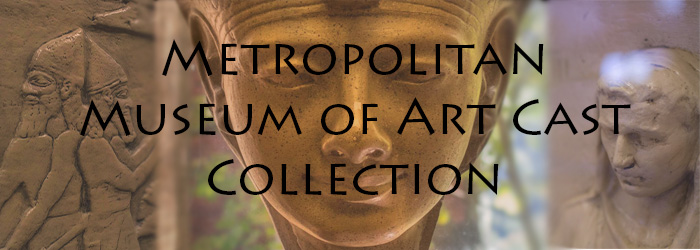
Description
Plaster cast of a relief depicting a maenad. Original relief was discovered at Rome, Villa Albani.
Publication Date
1978
Type of Artwork
Relief
Time Period/Geographical Region
Ancient Rome
Height (cm/in)
139.7 cm / 55 in
Width (cm/in)
76.2 cm / 30 in
Depth (cm/in)
13.97 cm / 5.5 in
Disciplines
Ancient History, Greek and Roman through Late Antiquity | Sculpture
Recommended Citation
Morehead State University. Camden-Carroll Library., "Dancing Maenad (Relief I)" (1978). Metropolitan Museum of Art Cast Collection. 1.
https://scholarworks.moreheadstate.edu/metropolitan_art_collection/1
Files
Download
Download Image (98 KB)


Comments
Roman copies of Greek Maenad sculptures were quite popular, and there are many extant examples. The Maenads were followers of the god Dionysius, whose frenzied dancing in the sacred rites led to them being labeled "mad women." This cast, however, was likely produced from a later forgery of a Roman relief. While the other Maenad relief example in our collection has been authenticated, there is no provenance for the original relief, found in the Villa Albani in Rome, from which this cast was made. The unusual positioning of the arms, the regularity of the drapery, the cloak hovering over her shoulders rather than resting upon them, and the unprecedented necklace have led experts to classify the object at the Villa Albani as a forgery. Still, multiple casts were made from the original object at the Villa Albani, including ours and one that was purchased by the Museum of Classical Archaeology at Cambridge University.